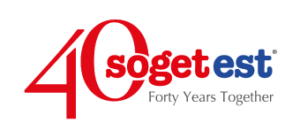To connect to our Webdisk space, you will need an FTP Client (e.g. WS_FTP, FTP commander, Filezilla, etc.) installed on your PC.
Many of these programs are available for easy download free of charge from the internet.
Once you have installed the program, you will need to set some parameters.
First, you will need to create a new tab to access our FTP space. Enter the name “Soget Est” if required.
While this parameter is not strictly necessary, it acts as a reminder so that the settings are retrieved for future access.
Ask Soget Est for the following connection details and login credentials: ftp server/host, remote folder path, username and password.
in the “ftp server” or “host” field, enter: (ftp server/host, provided by Soget Est)
if the “server type” field is present, type: “ftp server”
if the “remote folder” field is present, type: (remote folder path, provided by Soget Est)
in the relevant fields, enter your username and password (these are case sensitive):
username: (username, provided by Soget Est)
password: (password, provided by Soget Est)
upload one file at a time (if you have more than one) according to the procedures prescribed by the FTP Client used.
Once you have finished uploading, please email to advise us so that we can delete the file(s).



